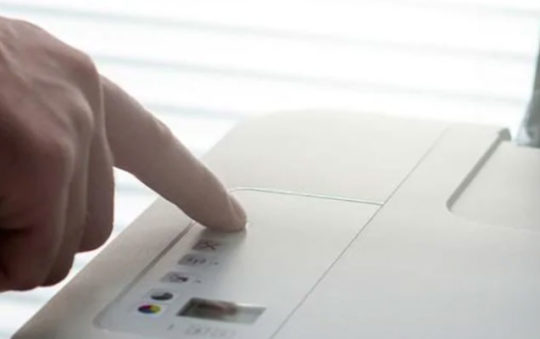While the Bluetooth probably conjures up images of people appearing to talk to themselves, the technology is useful for much more than voice. For example, Bluetooth shines for wireless data networking for up to 32 feet.
by Joseph Moran
It’s common these days to be out in public and see people who appear to be talking to themselves. In many cases, a closer look usually indicates that the person is actually chatting with someone else through a small earpiece wirelessly linked to their mobile phone. Such devices employ Bluetooth, a technology that’s used to connect devices together through the air.
But while voice is probably the most common use for Bluetooth, it can also be used for many other things, including data networking. In some respects, Bluetooth is similar to Wi-Fi — in fact, both use the same 2.4 GHz frequency — but Wi-Fi is a relatively long-range technology, while Bluetooth is designed to be used over comparatively short distances.
For example, Bluetooth can be an ideal way to link a PDA or smartphone to your laptop, so you can do things such as synchronize PIM data, transfer files, or share an Internet connection, all without a cable.
The idea of wirelessly linking handhelds with computers isn’t new, and has been around for years in the form of IR (infrared) connections. Infrared support can still be found today on many mobile devices, but Bluetooth offers a couple of key advantages over IR. Most notably, since Bluetooth is a RF (radio frequency) technology, it doesn’t require line-of-sight the way an IR connection does.
Bluetooth also offers much longer range — as much as 10 meters (around 32 feet) — compared to 1 meter or less for infrared. Bluetooth can also offer better performance than IR, because although there is an IR specification that supports 4 Mbps connections, the version found in most IR-equipped mobile devices top outs at a mere fraction of that — 115 kbps. By contrast, a common Bluetooth device that supports version 1.2 of the standard can handle around a 1 Mbps connection, while those based on the newer 2.0 + EDR (Enhanced Data Rate) specification are capable of connections up to 3 Mbps.
Getting It: Sink Your Teeth into Bluetooth
If you bought a notebook recently, it may well already be Bluetooth-equipped. But don’t worry if your system lacks built-in Bluetooth, because you can easily add it through a external USB adapter. Such devices are available from most of the same vendors that make Wi-Fi gear, and they’re quite inexpensive — Bluetooth 2.0 devices can usually be had for under $40, while 1.2 devices often sell for under $20.
Admittedly, using an external Bluetooth “dongle” isn’t quite as convenient as having it built-in. Even if your notebook doesn’t have it you still may be able to upgrade to internal Bluetooth provided it was an option available for your system, because most Bluetooth-capable systems get the feature through a mini-PCI card (which is similar to a RAM module).
Just as with memory, in some cases you may be able to upgrade to Bluetooth by installing a card via a hatch on the bottom of the system, so be sure to check with your hardware vendor (or even on eBay) to see if a Bluetooth module is available for your system. (I successfully added a Bluetooth module (purchased on the auction site) to my circa-2004 Dell Inspiron 300, though I did need to remove the ultra-slim system’s keyboard to gain access the appropriate connector.)
Technology Profiling
Every Bluetooth device has a specific list of services that it supports (commonly referred to as profiles). There are more than two dozen Bluetooth profiles in all, but not all devices support all profiles. For example, the aforementioned wireless headset need only support the headset profile, because you can’t really do anything else with it. On the other hand, a Bluetooth-equipped phone will typically support a Dial-Up Networking profile to allow the phone to be used as a wireless modem (though in some cases phone carriers intentionally omit or disable this profile to prevent customers from using it that way). Similarly, a smartphone or PDA could use a Bluetooth profile to create or join a TCP/IP network, or simulate a wired serial or USB connection to enable the use of synchronization software like Windows’ ActiveSync.
The process for connecting (or “pairing”) Bluetooth devices can vary slightly depending on the manufacturer and type of device being used. Some Bluetooth-equipped systems come with their own special utility software, but Windows XP (with SP 2), Vista, and Mac OS X all have a degree of Bluetooth support built into the OS. For specific information on how to use Bluetooth on each of these operating systems, check out the following links:
>> Windows XP
>> Mac OS X >
Joe Moran is a regular contributor to PracticallyNetworked.

